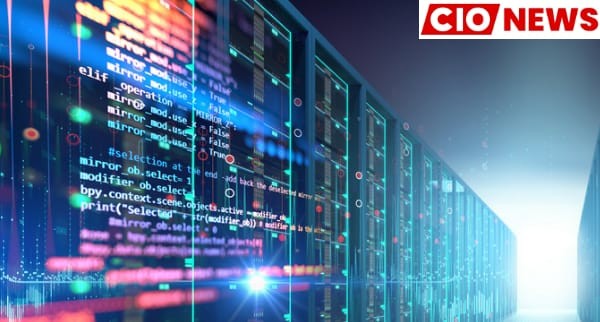The demand for data centers in India increased before the arrival of COVID-19, but changes in business behavior have increased the need for government support to increase capacity.
Moving home from work after the pandemic, and the consequent need for software as a service (SaaS), has pushed traffic to data centers as never before.
But today, many Indian companies rely on infrastructure in data centers outside the country, raising issues of sovereignty and efficiency: the more remote the server, the slower the interactions with it.
Even before the outbreak of COVID-19, the Indian government had already promoted the development of data centers: on 1 February, Indian Union Finance Minister Nirmala Sitharam said the government intends to support the private sector develop data center parks across the world.
Naveen Mishra, senior director, and analyst at Gartner sees an improvement in data center capability as a road to economic growth. “More data centers are paving the way for hyperscalers like Google, Microsoft, Amazon, and other major providers to invest in India. The move would also stimulate investment in India’s Tier-2 towns. Capabilities will be built within India and will have a positive impact on job creation.
In the same way, Aman Munglani, research director for enterprise computing at IDC, says the government’s move comes at an opportune moment, with megatrends such as the increasing usage of the Internet of Things ( IoT), artificial intelligence ( AI), machine learning ( ML), big data and analytics sweeping the market. “device and storage would become easily accessible to organizations investing in these megatrends, with more data centers coming in,” he said.
The shortage of data center resources in India could also have hindered the implementation of stringent data security legislation
In July 2018, a draft Personal Data Protection (PDP) bill was submitted to the Government of Narendra Modi by the Srikrishna Justice Committee. The proposal called for the mandate to store personal data within India. The revised version of the bill now requires only the storage of “sensitive personal data” within the country, although, The government has the power to classify all data as sensitive data. The bill ‘s criteria for localization of data drew opposition on different levels, with the absence of local data centers at the top of the list.
Although the latest data center regulation will make it simpler for businesses to store personal data in India, experts claim protection is possibly not one of the main drivers of government changes.
Information localization is a simple bet, Mishra notes, but it’s far beyond that. “The battle of Indian organizations to go digital, including the government, is a core driver of the need for more data centers.”
Another factor is the move towards ‘data globalization,’ building a common network to enable foreign businesses to invest in India.
Datacenter parks are much needed to deliver capacity to hyperscalers investing in India, he says. Cloud Service Providers ( CSPs) are another tool, he states.
Akhilesh Tuteja, Partner and Head of Risk Consulting at KPMG India, says that while the need for data storage has increased exponentially, other technical reasons drive demand for more data centers. These include the need for more computing capacity to support AI and ML, and for data centers closer to home to reduce latency, the time it takes for data to travel from server to client.
Latency is highly relevant in practices such as investing in the stock exchange, where milliseconds will render a financial difference to millions.
“The world is moving from traditional ways to artificial intelligence and machine learning, and they need heavy computing devices. It’s not affordable for businesses to have in-house heavy-duty computing machines, so they’re going to switch to the next viable option, cloud, “says Tuteja.
COVID – Impacts on data centers
As India witnessed more enterprises moving towards the cloud during the pandemic, it only emphasized the need for more data centers. The Data Center is the backbone of companies that are increasingly adopting digital channels for business.
Atul Gupta, IT advisor and cybersecurity leader at KPMG India, says digital adoption has been high during this pandemic, making businesses realize that Tier-2 and Tier-3 cities can also be potential business sectors. “COVID-19 has uncovered a new way of running businesses where Tier-2 and Tier-3 cities have begun to gain attention and have proved to be relevant. India Inc has seen an improvement in and quicker penetration of digital media.
IDC’s Munglani notes that businesses are preparing plans for greater use of cloud technology, postponing internal network refreshes, expanding the lifecycles of current systems, and offering assistance to quarantine staff.
It expects investment plans established during the pandemic to stay in effect afterward: “Organizations that have embraced the cloud paradigm during COVID-19 are unlikely to leave the service distribution framework as soon as the situation improves. They are more likely to stick with the software projects they have invested in; innovation should increase as we’re now looking at a far more web-ready world.
Aman Munglani, Research Director, Enterprise Computing at IDCAman Munglani
The pandemic has built a beneficial climate for infrastructure services (IaaS) providers, he added. For example, disaster recovery as a service (DRaaS) is something that will be taken more seriously than in pre-pandemic times.
However, cloud service providers face the challenge of meeting demand: “The supply chain has been significantly affected by the size of the infrastructure they purchase.” Organizations have moved from a cloud-first to a mobile-first approach. The number of security concerns will also increase now.
This may mean that service providers are slow to take advantage of the new government policy. Gartner’s Mishra says that building up data centers is a relatively complicated operation, even without a pandemic. “Land, power, water, tax, ongoing licensing with different departments is a frustrating process for investors and data center service providers. Datacenter administrators had to contend with a variety of problems to keep DC up and running.
Gupta echoes the concerns about power and land, adding that the additional work needed to secure data centers is something that everyone needs to face. “Cybersecurity is something that we will all have to deal with. Now that we’ve been doing personal grooming with a lot of care, ‘cyber-hygiene’ is still something we need to continue doing. Cybersecurity issues are here to stay, regardless of whether or not more data centers are coming.
That may be true, says Tuteja, but the security challenges in a data center are of a different scale and require different skills. “Running cybersecurity in an enterprise is very different from running cybersecurity in a data center,” he said. More data means more attacks, and so ‘data centers need super-specialists who have the right skills and talent to maintain the ecosystem of the data center ecosystem secure.”
Towards a fair playing field in India
If the policy is implemented diligently and more data centers are built, India’s IT leaders will have access to enhanced infrastructure, opening up new business opportunities, according to Gupta, even in Tier 2 and Tier 3 cities.
“There are three main things CIOs can expect as more data centers spread across the country. First, the ability to purchase technology will become much easier and the dependence on providers will decrease. Second, organizations in the B2C domain will have a wider consumer base as people from smaller cities will begin to be included. Third, digital enabling across organizations will be accelerated like never before,” he says.
IT leaders should also predict increased scalability, efficiency, and cost reduction, says Munglani. “The CIOs can also expect change management and better competence from IT operations, along with the skills of their employees,” he adds.
For Mishra, the role of the government is crucial, as demonstrated by the diversity of policies at the state level.
“The position of the government is certainly crucial. In several countries of the world, various state governments have set up their development parks. They invite DC operators to rent a place with power and other basic facilities at a certain amount of discount. DC operators are also offered local tax incentives, “he said.
“Few states in the southern part of the country are doing this at the local level, and it would be ideal for more states to set up such plans that would now fit well with the national policy announced by the finance minister. The policy, along with states that have their technology parks, will provide the right incentives to fuel space and address some of the challenges, “Mishra concludes.






